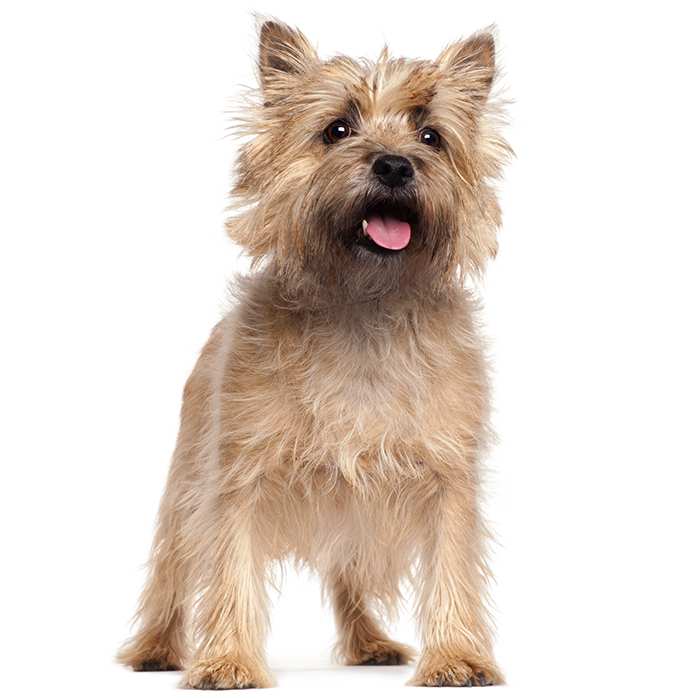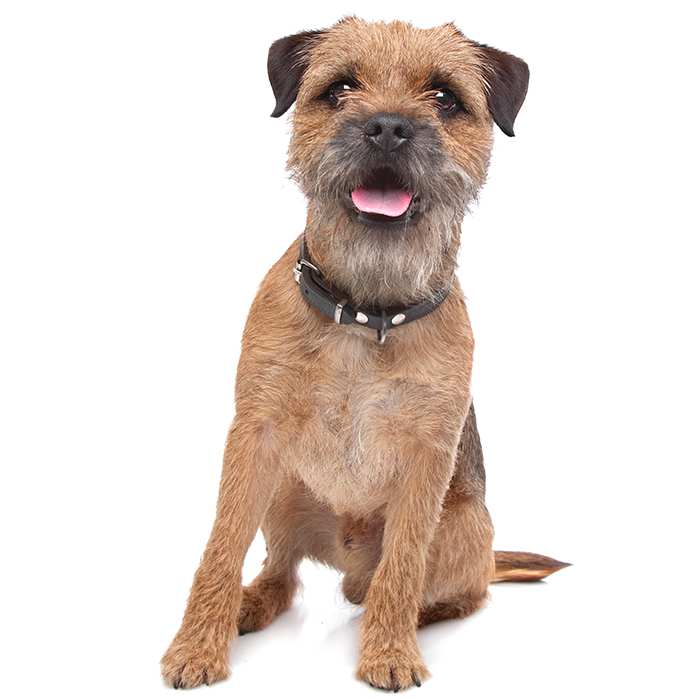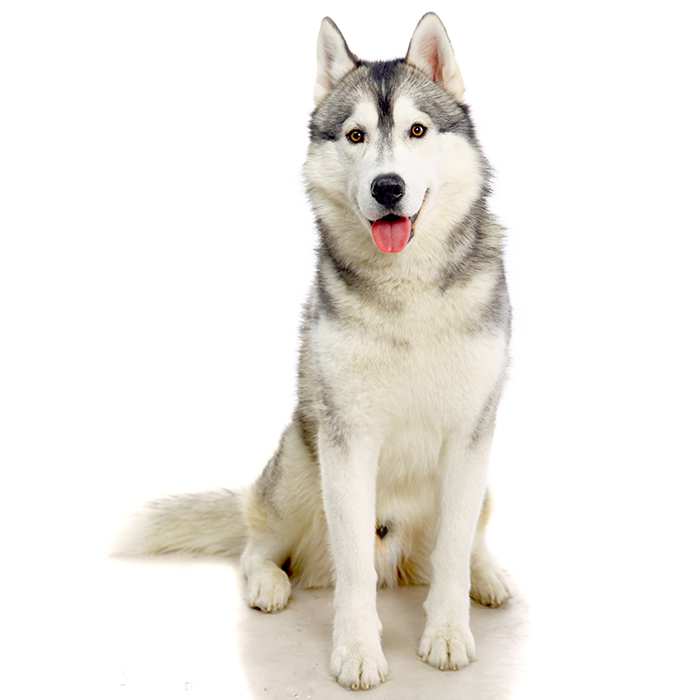Pomeranian
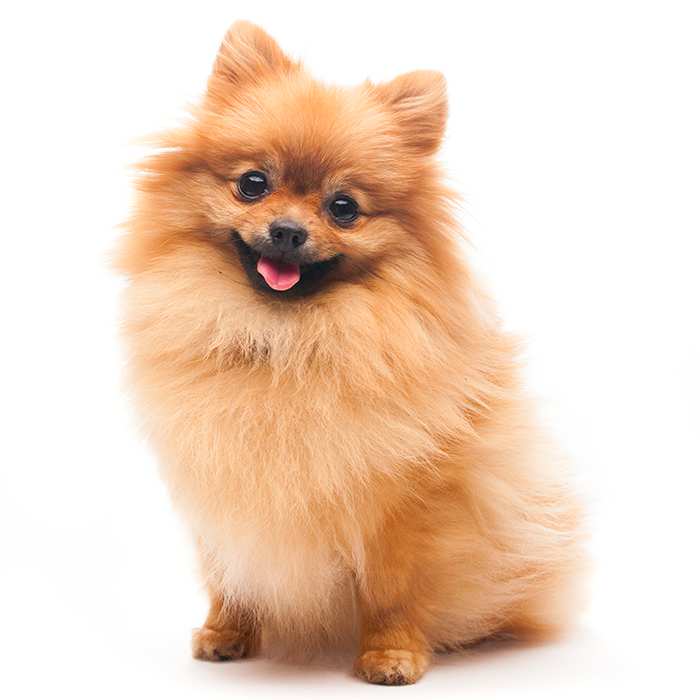

| Recommended for | Singles, families |
| Breed Classification | Toy group |
| Other names | Pom, Pompom |
| Lifespan | 12-16 years |
| Size | Small |
| Temperament | Friendly, playful & independent |
| Intelligence | High |
| Tendency to bark | High |
| Maintenance Level | Medium |
| Health Risk | This breed is in the lower risk category for developing health issues, hence it is one of the least expensive breeds to insure. |
Insuring a Pomeranian?
Get award-winning cover with more benefits and up to 80% of eligible vet bills reimbursed. Find out about your cover options.
Get a quick quote
Is this breed right for you?
Try our breed selector quiz to find out your best matching breed!
Insuring a Pomeranian?
Get award-winning cover with more benefits and up to 80% of eligible vet bills reimbursed. Find out about your cover options.
Get a quick quote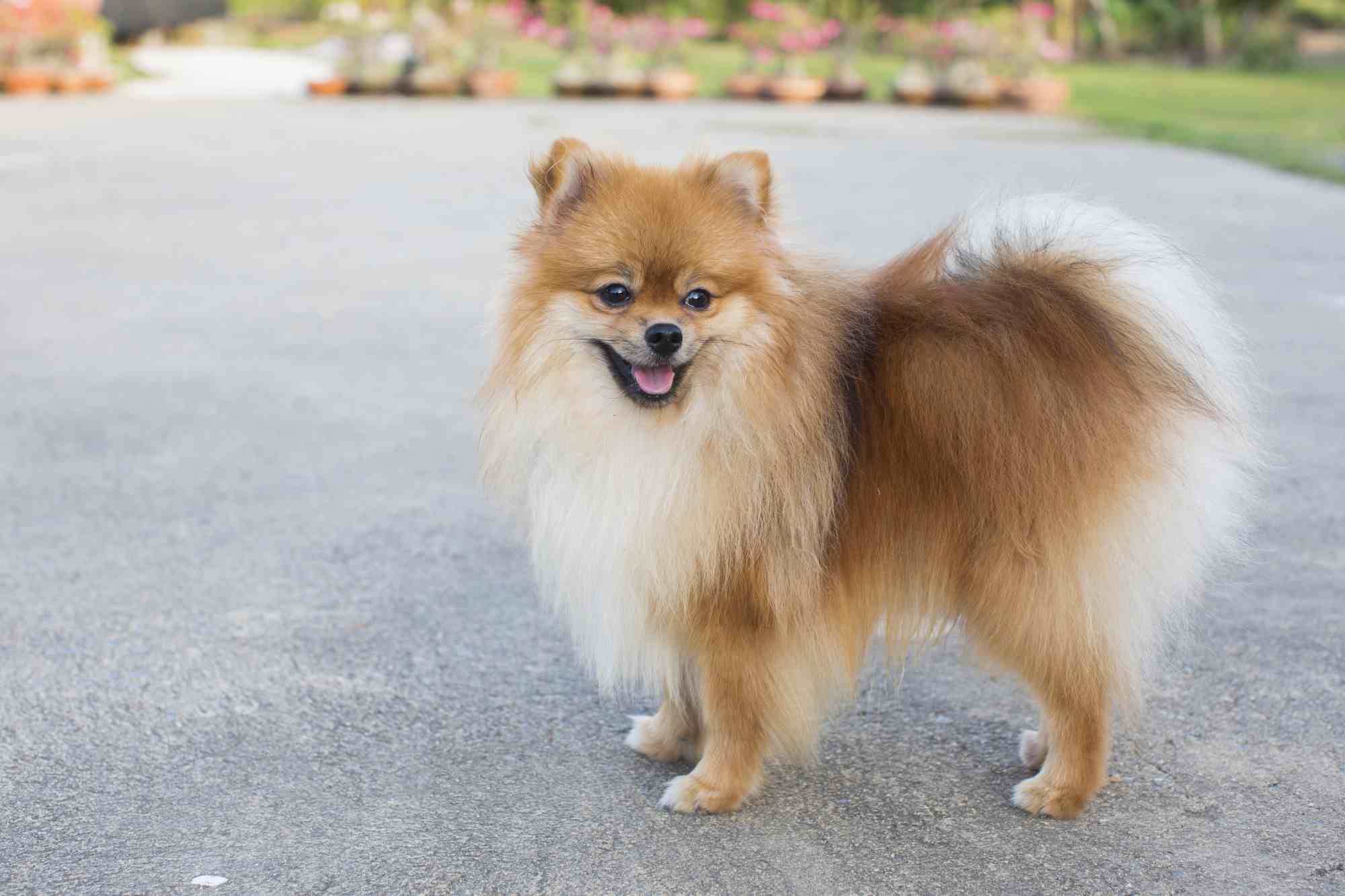
Breed history of Pomeranians
The Pomeranian is the smallest of the Spitz breeds (‘Spitz’ is German for “sharp point”, referring to the distinctive nose and muzzle). Its ancestors were large working Spitz-type sled dogs from the Arctic regions. It is named after the region of Pomerania that is now part of northern Poland and eastern Germany, which is credited with developing the Pomeranian into a smaller dog than its burlier and stronger Arctic cousins.
A long-time favourite of royalty, two Pomeranians were brought to England in 1767 by Queen Charlotte and King George III. Paintings of the dog in this period show a noticeably larger type (weighing between 14-23 kg) than the dog of today.
Queen Victoria, however, is credited with the surge in popularity of the breed. During her 64 year reign, she bred more than 15 different breeds of dogs, and in her later years fell in love with the Pomeranian while visiting Florence, Italy, returning to Britain with Pomeranians in tow. She owned a particularly small Pomeranian and began importing other small Pomeranians to add to her breeding program. In fact, she is credited with the resulting 50% decrease in breed size during her time. Her contemporaries King George IV and the wife of Napoleon I were both Pomeranian owners.
The earliest known Pomeranian brought to Australia was a chocolate-coloured dog in 1910. However, an 1879 advertisement offers a reward for the return of a white Pomeranian to Melbourne, so it is possible that the dogs have been in Australia since the 19th century.
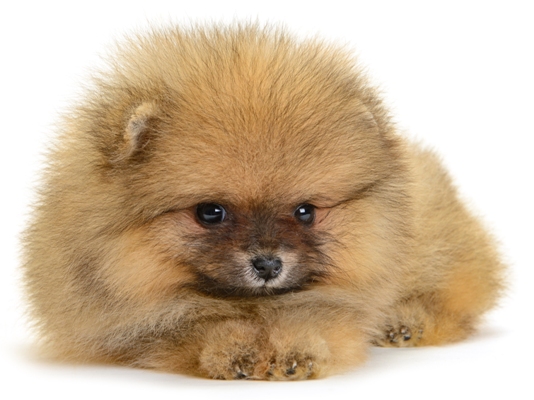
Physical description of Pomeranians
The Pomeranian combines a tiny body, a glorious fluffy coat and a smiling, foxy face, giving it a distinctive appearance.
The abundant double coat, with its frill extending over the chest and shoulders, gives the Pom its “ball of fluff” appearance. The under-coat is very short and thick, while the outer coat is long and soft.
The coat comes in almost two dozen colours, the widest variety of any dog breed. and various patterns and markings, but is most commonly seen in orange, black or white.
| Weight range | 2 to 3.5 kg |
| Height range | 13 to 28 cm |
| Colours | Wide variety, the most common being orange, black or white |
| Coat length | Long |
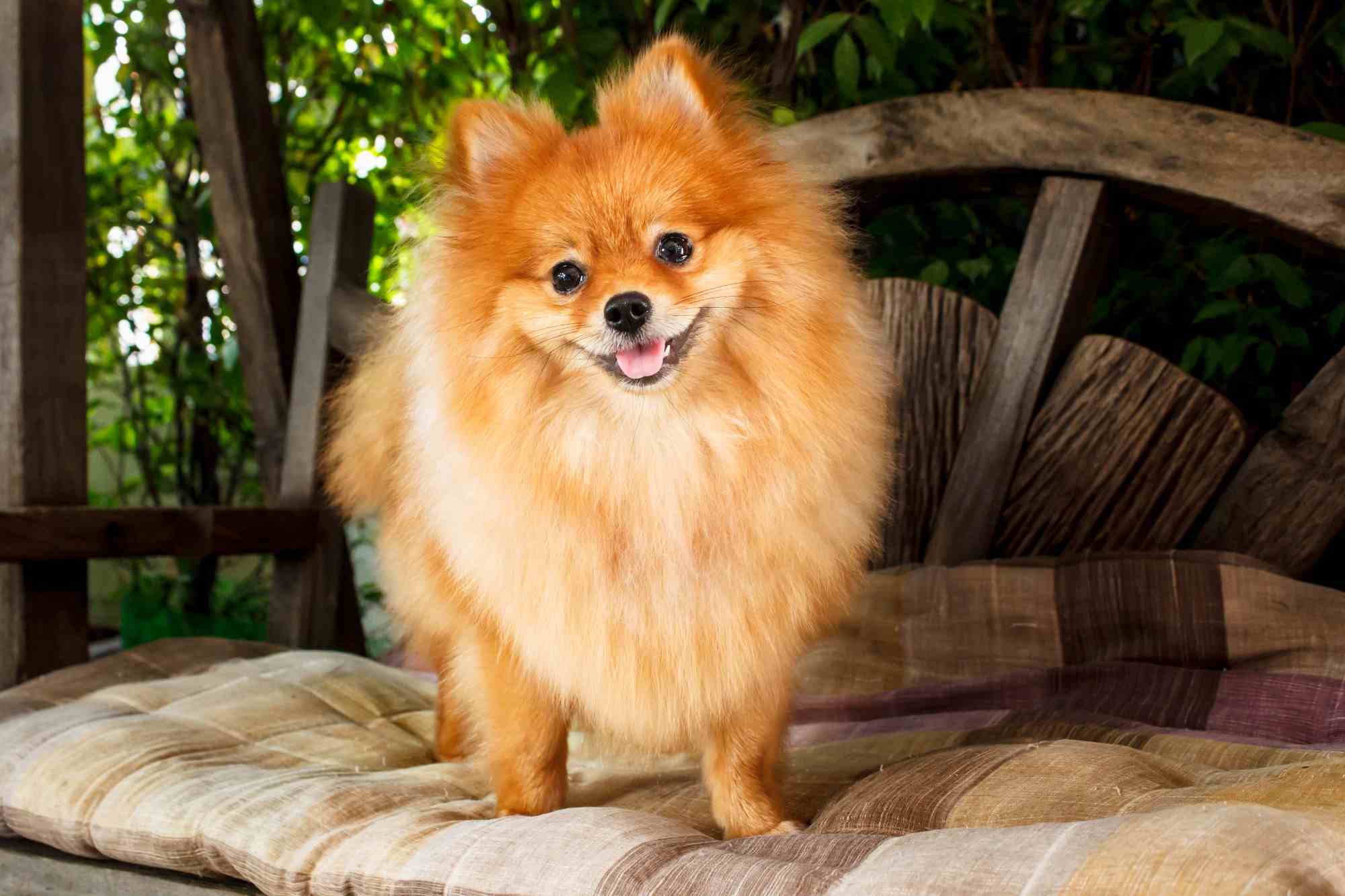
Pomeranian personality and temperament
The Pomeranian is a proud, bold, inquisitive, extroverted, energetic and spirited dog with a vivacious personality and a big-dog demeanour.
This is a loyal, affectionate, playful and friendly breed that enjoys a lot of entertainment. The bigger the crowd the happier they are. They need action and constantly want to do new things.
Pomeranians are very intelligent, curious and alert. They often bark when encountering new environments and people/animals; they are great watchdogs and will alert you when there are visitors. However, this behaviour can often get out of hand and they can develop a habit of barking excessively.
Quite an independent breed, Pomeranians will not agree with everything you want them to do, especially not to being left home alone. Poms may well have a melt down when their owners leave and they realise that they can’t go with them!
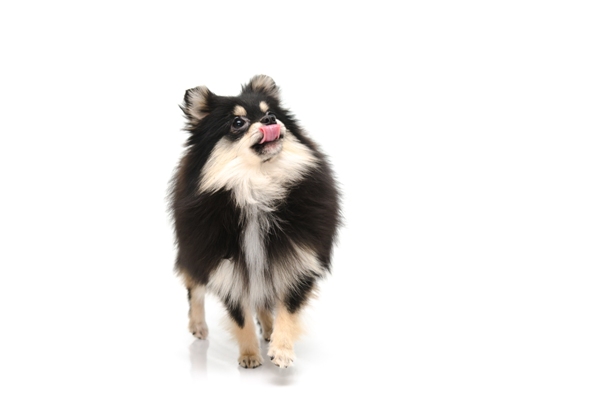
Pomeranians with kids and other pets
While they are generally good with children and not at all intimidating, Pomeranians are not well suited to very young or highly active children because of their small size. Also, they may snap at kids who make sudden movements or take them by surprise. For these reasons, Poms and young kids should always be supervised when playing together.
Poms are an excellent option for families with kids who are old enough to know the difference between a toy dog and a toy.
If properly introduced to other dogs and pets, the Pomeranian will usually get along well with them.
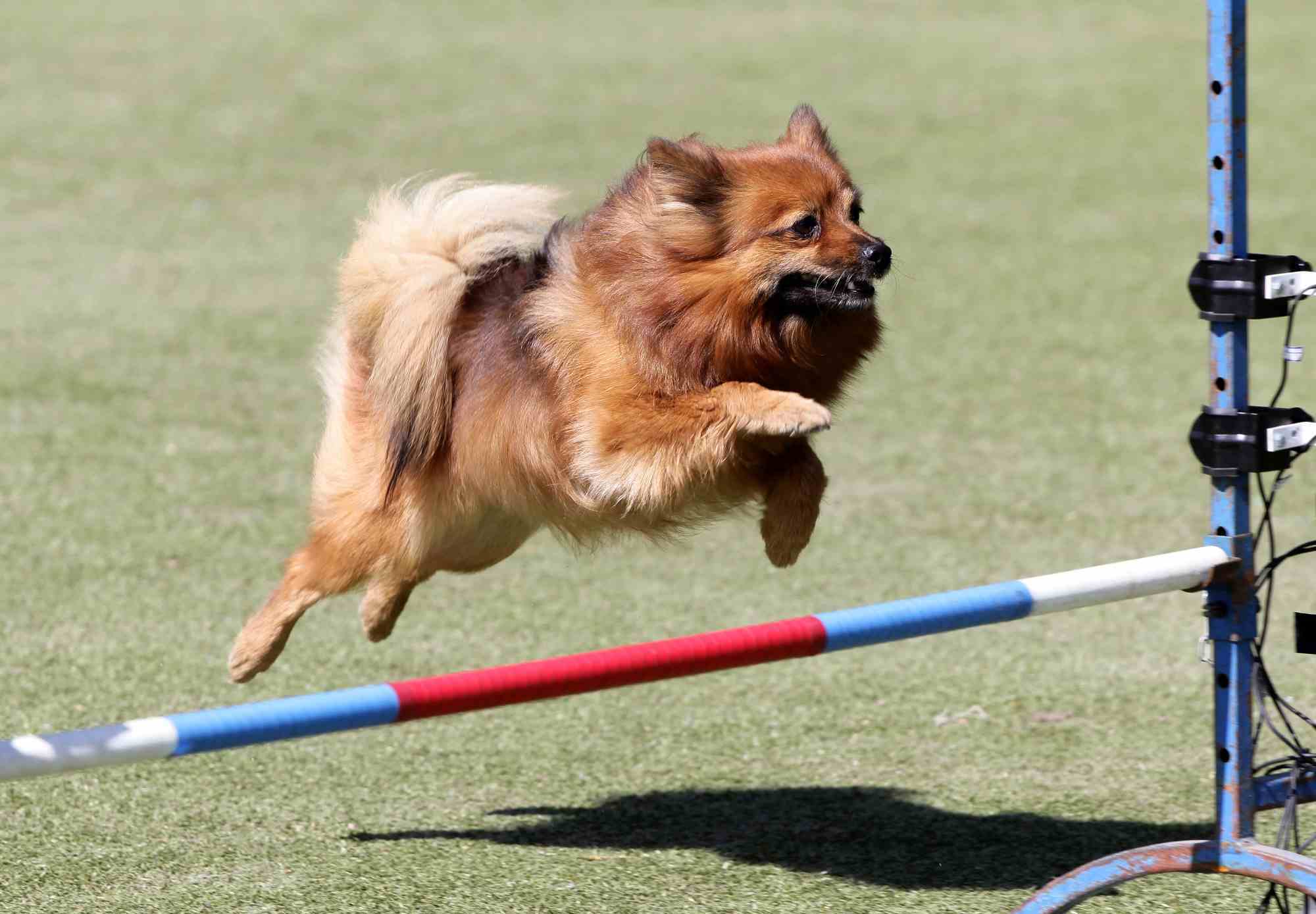
Pomeranian training and exercise
Pomeranians make great companions for the elderly people and people who live in apartments as they are very active indoors, especially when given toys. However, as much as they enjoy being lapdogs, Poms will benefit greatly from some outdoor exercise and the chance to run, play and go for walks.
Short walks every day and lots of adventures are first prize for this little ball of energy. Poms expect your genuine interest not just ball throwing at the park – when you engage with them, they want your full attention.
Always keep a close eye on your Pom when he or she is outside; they are notorious escape artists. Additionally, small breeds like Pomeranians can be mistaken for prey by large, predatory birds, and unrestrained dogs can easily hurt them.
Pomeranians are easily trained and make fine watchdogs. They will master tricks and games with ease, though their favourite activity is providing laughs and companionship to their special human.
As they are very intelligent, alert dogs who are eager to learn, they can be taught many tricks. Training them is a great way to stimulate them mentally, which is just as important for Poms as physical activity. Poms enjoy and can excel in canine activities like agility, rally, and obedience, or working as therapy dogs. Loyal to their owners, they will alert of intruders and make good watchdogs.
| Energy level | High |
| Exercise requirements | Medium |
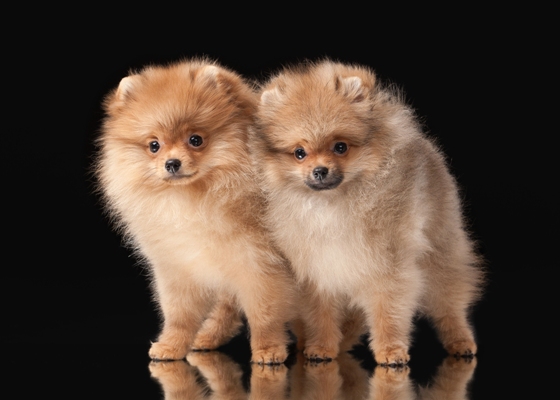
Pomeranian feeding and nutrition
The Pomeranian should do well on a high-quality dog food, appropriate to the dog’s age (puppy, adult, or senior) and activity level.
Some dogs are prone to getting overweight, so monitor your dog’s calorie consumption and weight on a regular basis.
Check with your vet if you have any concerns about your dog’s weight or diet.
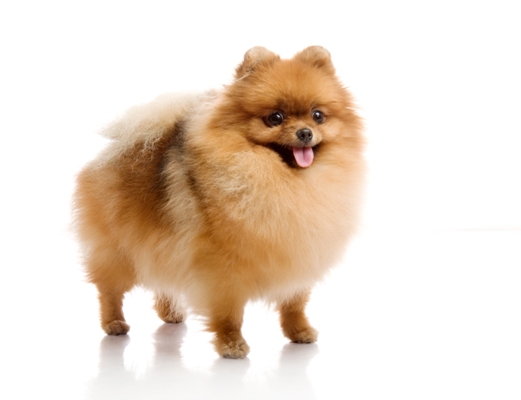
Pomeranian care and grooming
The Pomeranian’s profuse double coat requires frequent brushing to maintain its beautiful appearance. You should brush through with a pin brush and a slicker brush down to the skin once a week to keep the hair from matting.
If you are unable to do it yourself, it is highly recommended that you find a groomer to do a full groom, including bath, brushing, ears, nails, and anal glands, every four to six weeks.
Health issues for Pomeranians
- Eye Problems such as intraocular pressure, ametropia, microphthalmia and colobomas, can affect Pomeranians. These conditions can appear in adolescent dogs and if left untreated may lead to blindness. Symptoms include redness, scarring and excessive tearing.
- Patellar luxation is caused either by a deformity or trauma, which results in frequent dislocation of the patella in the knee, locking the leg. It causes pain and can be crippling, but many dogs lead relatively normal lives.
- Legg-Perthes disease affects the hip joint and has been known to affect toy dog breeds. It lowers the blood supply to the femur and causes the pelvis to disintegrate. Symptoms such as limping and atrophy of the leg muscle occur around the age of 4 – 6 months. Surgery can be undertaken to remove the affected area and the resulting scar tissue creates a “false joint” and the dog usually ends up pain-free.
- Tracheal collapse has also been known to occur in Pomeranians, in which the tracheal rings of the windpipe weaken and restrict the airway. Symptoms include a honking cough made worse by physical activity, excitement or heat, intolerance to exercise and fainting spells.

- “Black Skin Disease”, which is a combination of alopecia and hyperpigmentation (skin darkening) can occur in Pomeranians. Possibly hereditary, it affects males more often than females, and though it mostly occurs during puberty, it can happen at any age.
- Cryptorchidism, a common issue among male Pomeranians, occurs when one or both of the testicles do not descend into the scrotum. This can be fixed through surgical removal of the retained testicle.
Not all conditions are covered by Pet Insurance. For details of Bow Wow Meow Pet Insurance cover, refer to the Product Disclosure Statement.
What do Pomeranian owners claim for the most?
- Patella Luxation
- Dermatitis
- Faecal Appearance - Abnormal
- Vomiting
- Otitis Externa
Thinking about insuring a Pomeranian
Thinking about insuring a Pomeranian
Learn moreThinking about insuring a Pomeranian
Learn moreFree engraved pet ID tag on sign up3
Customer Satisfaction
21 day cooling off
Easy to use Pet Portal

GapOnly® in vet claims
FURTHER INFORMATION
Pomeranian Club of NSW: https://www.pomeranianclubnsw.com/

